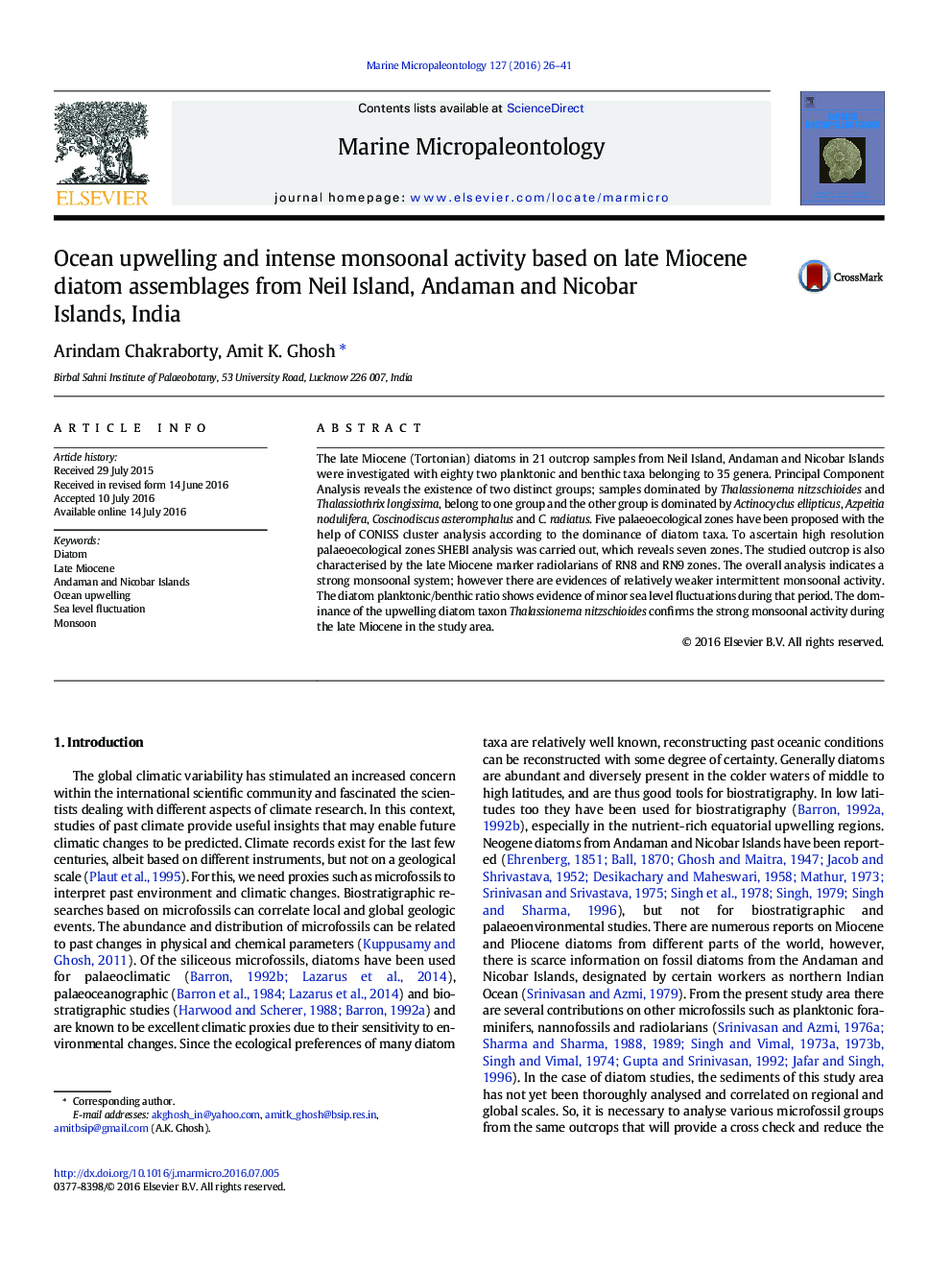| Article ID | Journal | Published Year | Pages | File Type |
|---|---|---|---|---|
| 4748743 | Marine Micropaleontology | 2016 | 16 Pages |
•We record 82 taxa of diatoms from the late Miocene (Tortonian) outcrop on Neil Island of Andaman and Nicobar Islands.•PCA was carried out to ascertain closely related samples owing to the dominance of centric and pennate diatoms.•CONISS cluster analysis and SHEBI analysis recognise 5 and 7 palaeoecological zones respectively.•Dominance of characteristic upwelling taxa provides convincing evidence of ocean upwelling and a strong monsoonal system.•Intermittent relatively weaker monsoon is reflected by sea level fluctuations derived from the planktonic/benthic ratio.
The late Miocene (Tortonian) diatoms in 21 outcrop samples from Neil Island, Andaman and Nicobar Islands were investigated with eighty two planktonic and benthic taxa belonging to 35 genera. Principal Component Analysis reveals the existence of two distinct groups; samples dominated by Thalassionema nitzschioides and Thalassiothrix longissima, belong to one group and the other group is dominated by Actinocyclus ellipticus, Azpeitia nodulifera, Coscinodiscus asteromphalus and C. radiatus. Five palaeoecological zones have been proposed with the help of CONISS cluster analysis according to the dominance of diatom taxa. To ascertain high resolution palaeoecological zones SHEBI analysis was carried out, which reveals seven zones. The studied outcrop is also characterised by the late Miocene marker radiolarians of RN8 and RN9 zones. The overall analysis indicates a strong monsoonal system; however there are evidences of relatively weaker intermittent monsoonal activity. The diatom planktonic/benthic ratio shows evidence of minor sea level fluctuations during that period. The dominance of the upwelling diatom taxon Thalassionema nitzschioides confirms the strong monsoonal activity during the late Miocene in the study area.
